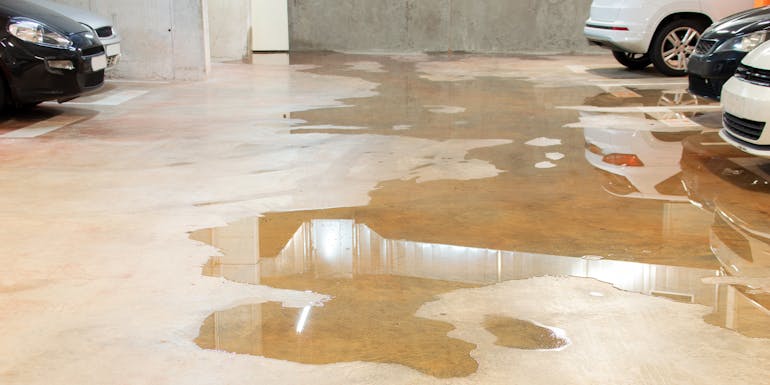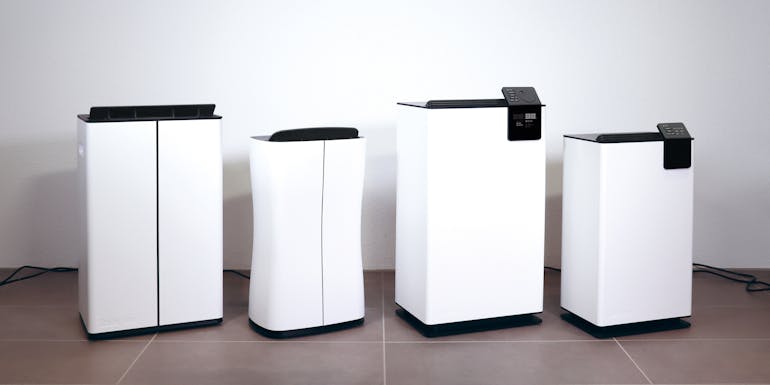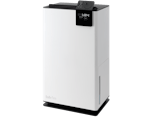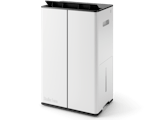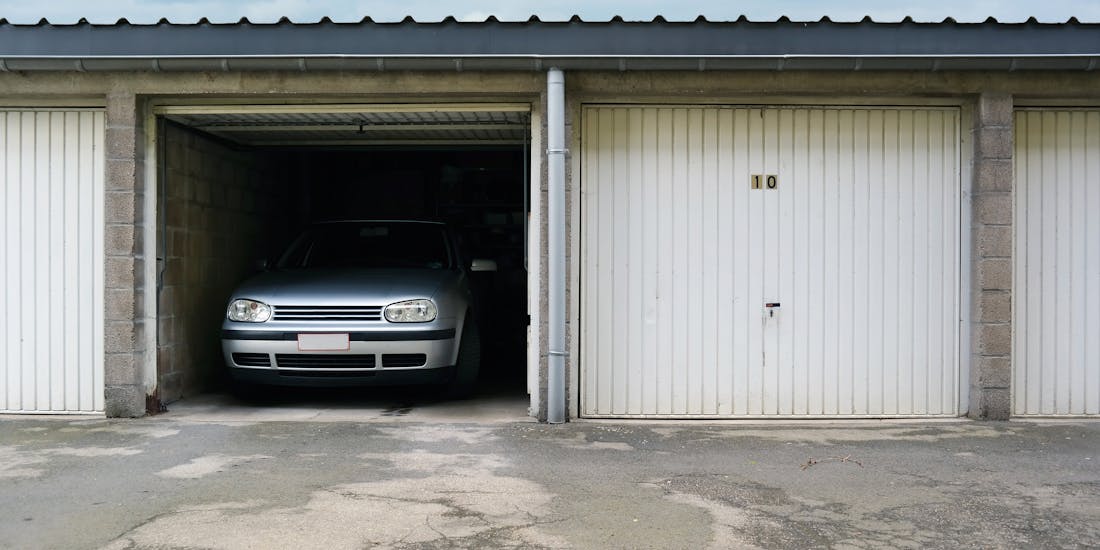
Nadine Walder, 6 August 2024
Dehumidify the air
Dehumidify your garage: Optimum humidity for the well-being of your vehicle
A car or motorbike is not only a useful means of transport, but also an asset that you should protect. Various environmental factors have an impact on the condition of your vehicle, including the humidity in your garage. Excessive humidity can lead to rust, mould and other damage that is not only unsightly but can also be costly. In this blog post, you will find out what the optimum humidity in your garage should be like, what role humidity plays and what measures you can take to keep your garage dry.
Read on to find out:
- The optimum humidity in the garage
- Causes of excessive humidity in the garage
- High humidity in the garage: What needs to be considered?
- Dehumidifying the garage with a dehumidifier
The optimum humidity in the garage
An optimum humidity in the garage is important for protecting your car and other stored items. The ideal humidity level in the garage should be around 50 and 55 per cent. However, many garages have higher values. If the humidity is too high, there is a risk of rust forming on metal parts and mould growth is encouraged on various surfaces. Classic cars, motorbikes and other vehicles with many metal and leather components are particularly sensitive.
On the other hand, humidity that is too low can dry out plastic parts and rubber seals and make them brittle. A hygrometer provides information on whether the humidity in your garage is too high, too low or optimal. The hygrometer indicates the relative humidity in relation to the temperature.
Causes of excessive humidity in the garage
High humidity in the garage can have various causes. These include:
- Condensation: When warm, moist air meets cold surfaces, condensation forms. This often happens in poorly insulated garages.
- Structural defects: Cracks in the walls or foundations can lead to moisture penetrating the garage from the outside.
- Insufficient ventilation: Insufficient air circulation prevents moisture from escaping.
- Wet vehicles: Vehicles that are parked wet in the garage after rain or snow increase the humidity.
- Weather influences: In autumn and winter or during longer periods of rain, additional moisture enters the garage from vehicles or wet leaves.
Dehumidifying the garage: What needs to be considered?
- Regular ventilation: Open the garage door and / or windows, if available, for about ten minutes a day to let in fresh air and transport the moisture outside.
- Check the temperature: Keep the temperature in the garage as constant as possible to prevent condensation. A temperature of at least 15 °C is recommended.
- Use a hygrometer: Place hygrometers in various locations in the garage to monitor humidity levels. A hygrometer is a simple and effective tool to identify problematic humidity levels.
- Regular cleaning: Regularly remove leaves, dirt and old objects from the garage to reduce moisture.
- Moisture protection for vehicles: Clear your vehicle of snow and lumps of ice before entering the garage to prevent unnecessary moisture from being transported into the garage.
These tips apply primarily to single garages. If you have stored your vehicle in a larger garage with other tenants, you should contact the caretaker or your landlord/landlady if you notice moisture problems in the garage.
Dehumidifying the garage with a dehumidifier
A dehumidifier can be an effective solution for keeping the humidity in the garage at an optimum level. Dehumidifiers remove excess moisture from the air and collect water in a container or channel it directly into a drain. Dehumidifiers are particularly useful in poorly ventilated or insufficiently insulated garages where other measures are inadequate. Modern dehumidifiers are also energy-efficient and usually have a hygrostat that automatically regulates the humidity.
Note that not all dehumidifiers are suitable for garages. Make sure you choose a model that is designed for use in larger rooms and works effectively at low temperatures. Most manufacturers indicate in the specifications for which room sizes and temperatures the dehumidifier is suitable. If the temperatures in the garage fall below 0 °C / 32 °F, you should explicitly look at the temperature specifications when buying a dehumidifier. Stadler Form dehumidifiers, for example, are only suitable for temperatures down to +5 °C / +41 °F. Below this value, the DEFROST function is activated too often.
Would you like to find out more about how a dehumidifier can help you feel better or what different dehumidifier systems are available? You can find more information on our information page about humidifying the air.
More about dehumidifying the air
If you have questions related to indoor room climate, please get in touch with us. Or subscribe to our newsletter to regularly get informed about current topics regarding indoor climate, experience reports or Stadler Form insights.

